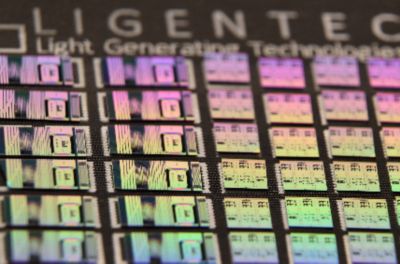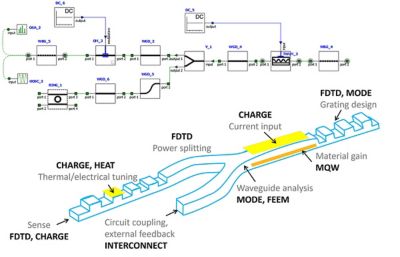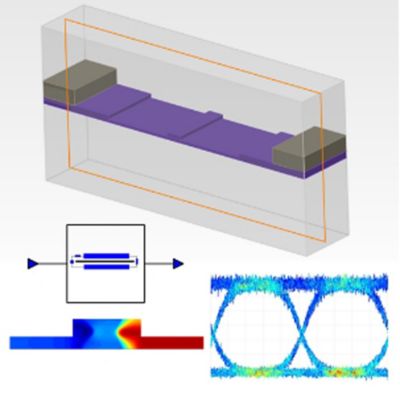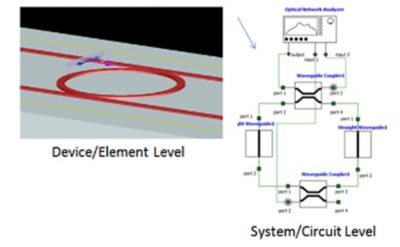Quick Specs
Ansys Lumerical INTERCONNECT works seamlessly with Ansys Lumerical CML Compiler, Ansys Multiphysics solvers, and third-party EDA and Layout tool vendors to enable fast, accurate, scalable photonic IC development.
Ansys empowers the next generation of engineers
Students get free access to world-class simulation software.
Design your future
Connect with Ansys to explore how simulation can power your next breakthrough.
Students get free access to world-class simulation software.
Connect with Ansys to explore how simulation can power your next breakthrough.
Ansys Lumerical INTERCONNECT simulates classical and quantum photonic integrated circuits while enabling the co-design and co-simulation of photonic and electronic circuits on multiple EDA platforms.
INTERCONNECT offers a comprehensive design environment for classical and quantum photonic integrated circuits (PICs). It features the industry’s best-in-class electronic-photonic codesign and co-simulation capabilities and essential design workflows like SDL, LVS, and DRC, compatible with multiple EDA platforms. Designers can leverage Lumerical’s PDK-driven platform to efficiently create manufacturable and customizable photonic designs accounting for associated electronics, packaging, and links.
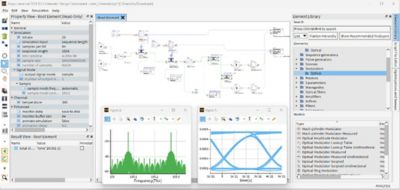

Join the Ansys Optics conversation
Ansys Lumerical INTERCONNECT works seamlessly with Ansys Lumerical CML Compiler, Ansys Multiphysics solvers, and third-party EDA and Layout tool vendors to enable fast, accurate, scalable photonic IC development.
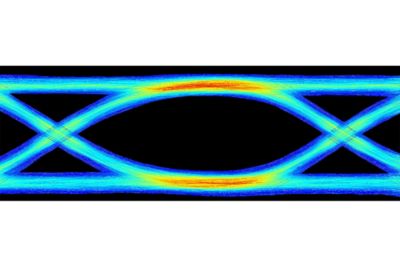
July 2025
The latest release of Ansys Lumerical INTERCONNECT delivers new capabilities in GPU acceleration, inverse design, and CAD interoperability unlocking greater flexibility and scalability for designers of next-generation photonic systems.
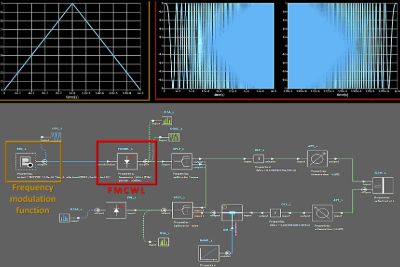
Set frequency modulation on a laser source directly compatible with arbitrary functions of frequency modulation.

Ansys Engineering Copilot is now integrated into Ansys Lumerical INTERCONNECT, providing access to the AI assistant directly within the product.

“We chose leading photonics simulation tool provider Ansys Lumerical as a partner in developing our first SOA compact model to bring our customers unparalleled design flexibility and confidence.”

“The integrated electronic-photonic workflow provided by Ansys to co-design and co-simulate Silicon Photonics and CMOS chips is an indispensable tool to speed up our design process and results in better chips with fewer errors and a shorter time to market.”
Ansys Lumerical INTERCONNECT offers a comprehensive design environment for classical and quantum photonic integrated circuits (PICs).
Experience industry’s most advanced and extendible platform for co-design and co-simulation of electronic integrated circuits and PICs.

Design and optimize a wide range of photonic integrated circuits using INTERCONNECT’s extensive library of models, ready to use foundry calibrated models, or customized compact models.

34% of an engineer's time is spend in searching for simulation data. This video highlights how such challenges can be solved with Ansys Minerva and make engineers more productive.
Reduce the complexity involved in simulation projects, allow team members to work harmoniously to save time and ensure best practices consistently across the projects.

It's vital to Ansys that all users, including those with disabilities, can access our products. As such, we endeavor to follow accessibility requirements based on the US Access Board (Section 508), Web Content Accessibility Guidelines (WCAG), and the current format of the Voluntary Product Accessibility Template (VPAT).
If you're facing engineering challenges, our team is here to assist. With a wealth of experience and a commitment to innovation, we invite you to reach out to us. Let's collaborate to turn your engineering obstacles into opportunities for growth and success. Contact us today to start the conversation.
